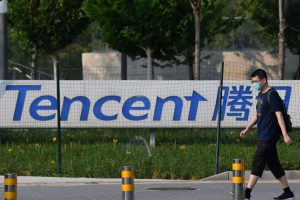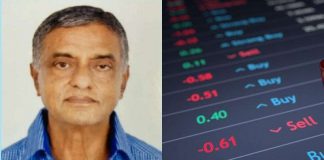APRIL 3, 2021

A typical U.S. investor with a large proportion of his or her portfolio allocated to an S&P 500 Index fund isn’t as diversified as they might believe. As a result, you might consider broadening your horizons, spreading risk and being exposed to more opportunities by looking to emerging markets.
At the end of this article, you can see just how “undiversified” broad U.S. index funds can be.
Philip Ehrmann of Manulife Investment Management co-manages the John Hancock Emerging Markets Equity Fund with Kathryn Langridge. During an interview, Ehrmann said working in the EM investment space is “like watching industrial revolutions happen every day of the week.”
He and Langridge focus on “identifying and investing in sustainable growth.” He said he has been considering “human capital, and other ESG (environmental, social and corporate governance) factors” for three decades. Another part of the strategy is “actively managing the opportunities and risks” associated with each emerging market, Ehrmann said.
The John Hancock Emerging Markets Equity Fund’s Class A shares and Class I shares are rated four stars (out of five) by Morningstar.
The fund’s benchmark is the MSCI Emerging Markets Index which includes 27 countries. The fund holds 62 stocks in 13 of those countries. Here are its largest 10 holdings as of Jan. 31:
The fund tends to buy locally listed shares, although you can see that the Alibaba Group Holding Ltd. investment is in American depositary receipts (ADRs). There are also ADRs available for other stocks in the portfolio, including Tencent Holdings Inc. Taiwan Semiconductor Manufacturing Co. Meituan and Naspers Ltd.
When discussing the portfolio, Ehrmann said “we are very lucky in EM because tech is a major driver, both hardware and software.”
He said the success of Taiwan Semiconductor was underlined when new Intel Corp. CEO Pat Gelsinger said he was working to increase its chip-manufacturing capabilities to better compete with manufacturers in Asia.
Ehrmann said the COVID-19 pandemic had accelerated two important EM trends — online education in China and India, and “a dramatic pickup of ecommerce in Latin America.”
That last trend is represented by the fund’s investment in MercadoLibre Inc.
He mentioned Tal Education Group as an example of a company expanding online education services in China. The stock hit a record intraday high of $90.96 on Feb. 16. It fell 43% from that level through March 29. Ehrmann said the company is a long-term investment because it is a “steady compounder” with a long runway for growth in a highly fragmented industry.
A company Ehrmann mentioned as possibly “the most interesting” is Naspers Ltd. which is one of the fund’s largest holdings and relatively unknown to American investors. Naspers is based in South Africa and was an early investor in Tencent Holdings Through its Prosus NV subsidiary, Naspers controls a 31% stake of Tencent.
Tencent’s market capitalization is about $750 billion, while Naspers has a market cap of about $102 billion. So you can see that the company’s Tencent investment is grossly discounted by investors. The big reason for this is that Naspers is listed in South Africa. Ehrmann said that trading volume for the ADR is very low for such a large company. He said Naspers is trading at about half the value of its investments, so he sees tremendous upside for the stock.
He called Naspers “a highly discounted way to invest in Tencent” and touted the company’s track record for investing in new businesses over the years that eventually were listed publicly on their own or sold to other companies. Naspers own’s 10% of BYJU’s, an Indian company that offers online education programs and hasn’t yet gone public through a share offering.
Fund performance
Here’s how the fund’s performance has compared to that of the benchmark MSCI Emerging Markets Index for various periods:
For the class A shares, sales charges, if any, have been excluded.
Ehrmann said the fund is overweight China when compared to the index, because MSCI has been slow to include Chinese A-shares. Those are the ones not listed in Hong Kong.
Your U.S. index fund isn’t so diversified
Big U.S. tech companies dominate the financial media, and rightly so. They have been the major drivers during the bull market. One very important reason for this is that the broad stock indexes are weighted by market capitalization.
Looking at the SPDR S&P 500 ETF Trust the top five companies held by the fund — Apple Inc. Microsoft Corp. Amazon.com Inc. Facebook Inc. and Alphabet Inc. — make up 21% of the portfolio. If we look at the Nasdaq-100 Index as tracked by the Invesco QQQ Trust the top five holdings make up 41% of the portfolio, with Apple alone accounting for 11%.
So those indexes are more concentrated than many people realize. One way to broaden your horizons is to add exposure to emerging markets. The largest of those are China and India — the two most populous nations on Earth, with rapidly growing consumer markets.
Courtesy/Source: MarketWatch

































































































